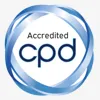Learn how to use Scratch
Quick links - Quick guides Two-minute learns Lesson plans and teacher guides
Take the tour
Here's our guide of the Scratch workspace, this should provide you with the foundations to help your class get coding.
We've also provided these flash cards that can be printed to use with your children.
Printable flash cards (186kb -pdf)
Quick guides
Getting started
This video will show you basics of starting to code in Scratch. Get an introduction to the blocks and how they fit together to make things happen in your projects.
Tutorials explained
The built-in tutorials have been developed by the Scratch team to help coders start their learning. They are a great way to get started and here we show you how.
Extensions explained
Scratch is great for using with other devices and systems. The extensions give you access to lots of cool features to help make your projects even better.
Making music
Explore the intersection of coding and creativity by introducing music coding with Scratch. This guide lays the groundwork for your class to start composing their own digital music.
Using text to speech
Unlock the power of Scratch's text to speech extension. This guide prepares you to bring your class's projects to life with speech, enhancing their coding experience.
Two-minute learns
Inputs
Inputs can be anything from pressing a key on your keyboard to video movement on your webcam. Whenever you use a device you are giving it inputs. Watch this video to find out about the different events in Scratch.
Movement
Making your sprites move is a key part of most games and animations made using Scratch. Use this simple video to find out about different ways to control how your sprites move.
Loops
Loops are used in most coding languages from simple ones like Scratch to more complex text based languages. Watch this video to learn the basics about loops.
Conditionals
Conditional statements trigger parts of your code when something happens. Watch this video to see how to use conditional statements.
Broadcast messages
Broadcast messages are used to let one part of the code or project communicate with another part. This means that you can coordinate actions across multiple sprites using broadcasts. Watch this video to learn the basics of broadcast messaging.
Lesson plans and teacher guides
All lessons are planned for around 45 minutes
Introduction to Scratch
Kickstart your class's journey into coding with our Scratch introduction. This activity not only unveils the exciting world of Scratch but also demystifies key computing terms.
Introduction to loops
Learn about loops through the universal language of dance, then apply this knowledge to create a drawing project in Scratch. It's a fun way to teach efficient coding by simplifying instructions.
Introduction to conditionals
Bring the concept of conditional statements to life using everyday scenarios. Start with an engaging offline activity, then progress to creating a Rock, Paper, Scissors game in Scratch.
Introduction to variables
Unravel the concept of variables in programming, highlighting how data values can change within a program. This lesson is a foundation for understanding dynamic data handling.
Introduction to algorithms
Explore the world of algorithms with this simple lesson plan. It's the perfect introduction for those new to computing, laying out the basics of creating ordered instructions to solve problems or complete tasks.
A-maze-ing lesson plan
Guide your pupils through the basics of computational thinking and programming by creating a maze game in Scratch. Start with a hands-on offline activity, then bring their mazes to life with code.

